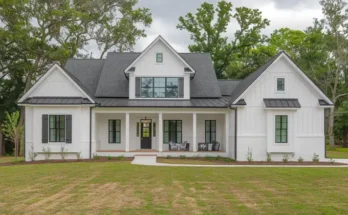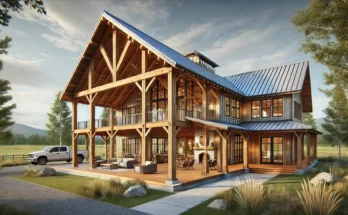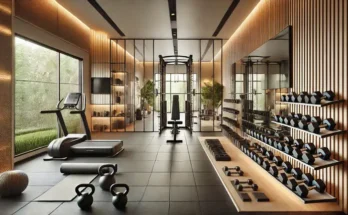1. Introduction
1.1 Understanding the Concept of Tiny Homes
The definition of tiny homes applies to creative housing units which efficiently distribute multiple amenities into a square footage between 100 to 400. Comfortable arrangements combined with functional design elements and aesthetic appeal are always prioritized in each tiny house.
1.2 Overview of the Rise in the Popularity of Tiny Homes
In the past few decades, the demand for tiny homes has increased exponentially. Economic crises, environmental issues and the desire to practice minimalism have been some of the driving factors. A large population believes that tiny homes will allow them greater financial independence and a greater quality of life.

1.3 Contemporary Design is Required for Style and Functionality
Given the sheer size of a tiny house, it can be relatively difficult to live in them unless the designs are stylish and practical. These smart designs enhance the living experience of a tiny home while fulfilling every modern requirement.
2. Key Features of Creative Tiny Home Designs
2.1 Space-Saving Architecture
The signature feature of a tiny home is the use of space-saving architecture. The use of concealed storage and hanging furniture are useful techniques to combat the common issue posed by limited space.
2.2 Multi-Purpose Furniture
Furnishing a tiny home can be a challenge since it is essential to consider practical innovation. For instance, a chair which also serves as a bed or stairs with drawers for storage purposes do that exact job.
Design Name | Size (sq ft) | Features |
Modern Cube | 220 | Glass Walls, Smart Home |
Rustic Retreat | 270 | Wood Finish, Fireplace |
Solar Pod | 310 | Solar Panels, Off-Grid Capabilities |
2.3 Incorporation of Sustainable Materials
One of the most critical features of today’s tiny homes is the availability of sustainable materials. These home technologies include windows with improved aesthetics that are energy efficient, bamboo flooring and wood which are sourced from recycled materials.
3. Integration of Smart Technologies in Tiny Homes
3.1 Automation of Homes
Modern technology has had an unprecedented impact on tiny homes today. The automated homes feature temperature adjustments, voice command capabilities and smart lighting integrated into the homes, which enhance comfort while limiting energy usage.
3.2 Devices that are Energy Efficient
Devices such as induction stoves and refrigerators offer high-quality functionality while being compact, which helps keep the bills down since they consume less energy than their competitors.
3.3 Convenience and Security
Even in homes that do not depend on grid integration, there are locks, security cameras and integrated alarm systems available that help ensure safety and comfort.
4. Embellishing Design Features
4.1 Robust Chassis Design for Great Aesthetics
There is a clean line pattern with no clutter, fused furniture and a modern wrapper that are traditionally believed to be modern and stylish, aligning perfectly with minimalist homes.
4.2 Ensuring Use of Large Windows and Skylights
Spaces can now feel bigger and more breathable with the employment of big windows and skylights that merge both outdoor and indoor areas together, allowing the insides to get ample sunshine.
4.3 Selecting Decoration for Smaller Spaces with Wider Dimensions
Personality can be added by the use of light-colored paint, bold accents and distinctive textures to give the rooms a larger feel and look.

5. Effective Utilization of Area
5.1 Sorted Areas with Partitions Lifted
Lofted sleeping areas are an efficient way to expand space in tiny houses. They provide extra square footage for either living or storage at the bottom.
5.2 Plans with a Fully Devoid of Space Washrooms and Kitchens
Innovations in design have transformed even the smallest bathrooms and kitchens into something useful. These places can be optimized through the use of fold-out counters, pull-out cabinets and space-saving plumbing fixtures.
5.3 Partitions Removed
Removing partitions creates barrier-free interaction with the spaces. This is primarily prevalent in tiny homes as it gives the sensation of living within a larger home while simultaneously spatially bifurcating the area for functional effectiveness.
6. Out of the Box Tiny House Layouts
6.1 Bungalows
Ground floor plans can also be informal, functional and easy, especially for those with restricted mobility. These plans usually incorporate multifunctional spaces with ingenious storage systems embedded into the walls.

7. Efficient Use of Space
7.1 Affordability
For a world that has morphed into a classist society, those who lack the relevant monetary resources still have hope with these dwellings as they cost around 90% less than traditional housing.
7.2 Freedom to Roam
These types of tiny dwellings are quickly growing in popularity because they enable a more mobile lifestyle. The owner can travel about while still being able to experience the comforts of home.
7.3 Freedom and Mobility
By constructing compact homes, individuals are liberated from a myriad of duties, which allows them to alleviate any unwanted debts and clutter from their lives.
Design Name | Size (sq ft) | Features |
Compact Comfort | 200 | Loft Bed, Solar Panels |
Eco Haven | 250 | Green Roof, Rainwater Harvesting |
Urban Minimalist | 300 | Smart Tech, Foldable Furniture |
8. Adjustments to Practicing Tiny Living
8.1 Space Management
Spaces can be designed followed up with furniture that can carry out a variety of tasks in order to maximize the use of space provided.
8.2 Building Codes and Zoning Ordinances
It is fundamental to grasp every local ordinance as they are ambiguous and show a wide distribution of permits and zoning regulations that one can follow for building a house.
8.3 Storage Items for Minimalists
Some examples include putting up mounted shelves on a wall or burying compartments into the ground so that the place does not look cluttered while providing efficient storage for your belongings.

9. Climate Design
9.1 Insulation
By using insulation designed for particular climates, a person does not require heaters or air conditioners.
9.2 Weatherproofing
Using durable materials such as metal roofs or treated wood enables the house to withstand harsh climates.
9.3 Ventilation Systems
A good ventilation system is particularly useful for people living in humid areas because it ensures there will be less moist air trapped inside the house.
FAQs
What is a tiny home?
A tiny home consists of areas that do not exceed 400 square feet while following strategies that minimize space requirements.
Are tiny homes expensive?
Tiny homes cost less than their traditional counterparts because the prices of sustaining traditional houses continue to rise
The mobility of tiny homes remains a possibility since many of them can be built for use on wheels?
Tiny homes normally include wheeled structures that grant their owners freedom to relocate their homes.
When seeking to optimize tiny home spaces homeowners should give special attention to which areas require the most room?
Foldable furniture with bunk beds along with space-saving design ideas make the most of this structure.
The statement that small dwellings are environmentally sustainable holds accurate validity?
The biodegradable construction materials with low energy needs ensure that the chateau doubles as an environmentally responsible structure.




